
Table of contents
- Tip 1: Add a document title
- Tip 2: Keep tables simple
- Tip 3: Consider using the "Format as a Table" feature
- Tip 4: Add alt text to images
- Tip 5: Use helpful link text
- Tip 6: Ensure the text has good color contrast
- Tip 7: Accessibility Checker
- How to export an Excel Spreadsheet to PDF for accessibility
Before you begin, ensure the Excel document is saved as a .xlsx extension.
Tip 1: Add a document Title UNDER “FILE PROPERTIES”:
The file properties for every document should include a brief and accurate title. The document title is the first thing a screen reader will read aloud.
ADD A "TITLE" ON MAC:
- Go to the top menu and choose "File > Properties..."
- In that dialog box go to the "Summary" tab.
- Fill in the "Title" field.
ADD A "TITLE" ON WINDOWS:
- Go to the top Ribbon menu and choose "File". It will slide out a new page.
- Look on the right under the Properties heading for the word "Title".
- Click the area to the right of the "Title" which says "Add a title".
- Fill in the "Title" field.
Tip 2: Keep Tables Simple:
Screen readers keep track of their location in a table by counting table cells. Screen readers also use the first row of information to identify header rows and columns.
- Avoid merging cells. It makes the data hard to traverse for screen reader users.
- Use a simple table structure for data only, and specify column header information.
- Visually scan your tables to check that they don't have any completely blank rows or columns.
Tip 3: Consider Using the "Format as a Table" Feature:
Screen readers use header information to identify rows and columns. Clear table headers provide context and make navigating the table content easier.
Tip 4: Add Alt Text to images:
Alt text is a short description of an image. It ensures that images are accessible to screen reader users.
Right-click on an image. Select "View Alt Text...". ...". (This may be “Edit Alt Text” in other versions of Excel.) Describe what is important about this image in the context of the text that surrounds it.

Tip 5: Use helpful link text:
It is important that links describe what they do and where they will take the user.
Bad link text:
- Using "Read more" or "Learn more" are a bad habit because it does not indicate where it will take the user.
- Using full URLs like "https://biglongurl.org/foobar/43245" is bad because it does not mean anything to screen readers. It's just a bunch of letters and numbers. It does not indicate what the link is for.
Learn more on our hyperlink explanation page.
Doing this on Mac and Windows looks a little different.
On Mac
1. Choose the URL, then right-click and choose "Hyperlink".
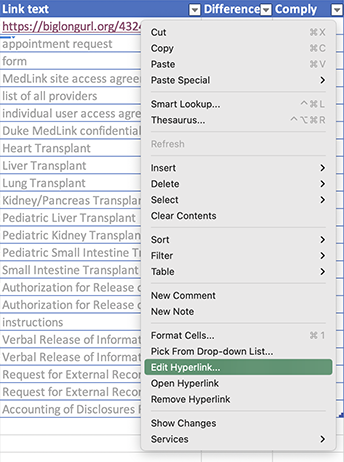
2. Change the "Text to Display" to a short description of the link's destination. This is the text that will be hyperlinked.
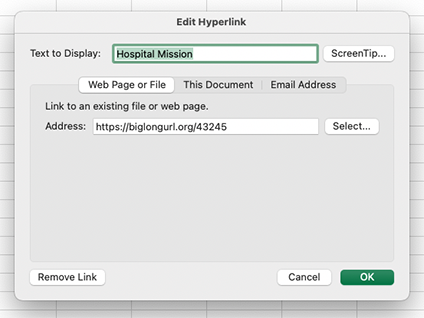
On Windows
1. Select the URL, then right-click and choose "Link" or "Edit Hyperlink".
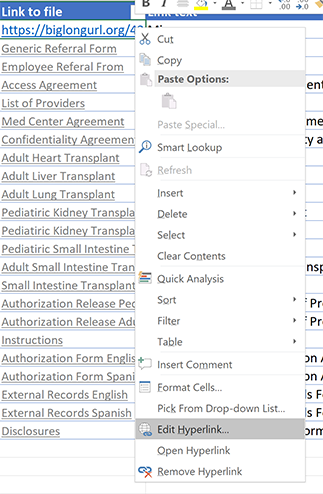
2. Change the "Text to Display" to a short description of the link's destination. This is the text that will be hyperlinked.
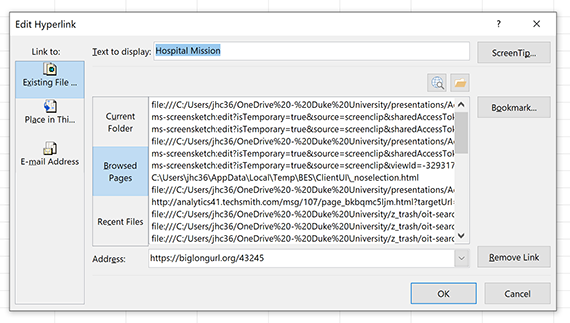
TIP 6: ENSURE THE TEXT HAS GOOD COLOR CONTRAST:
It is important for people to be able to easily read the text on your page. Avoid colors like yellow or light grey. Read more about it on our color contrast page.
TIP 7: ACCESSIBILITY CHECKER:
There is a built-in Accessibility Checker on most Microsoft Office products. Note that not all of the issues it flags are barriers to access; if you follow the previous seven tips listed here, your document should be in good shape. When you select an issue in the accessibility checker, it provides tips on why it might be a problem and steps to fix the issue.
To open it:
1. In the top Ribbon, click the "Review" tab.
2. Select the "Accessibility Checker" button.

3. This will open a panel to the right of the document. Review the issues.
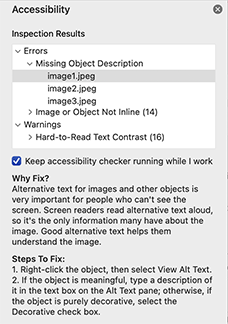
NOTE 1: You can leave it as an Excel spreadsheet (preferred), or save it as a PDF.
Note 2: If you are saving it as a PDF, follow the instructions below. You must export it correctly to preserve the document’s accessibility features.
How to export an Excel Spreadsheet to PDF for accessibility
This is different between a Mac and PC.
SAVE AS PDF ON MAC
Choose "File > Save a Copy...".
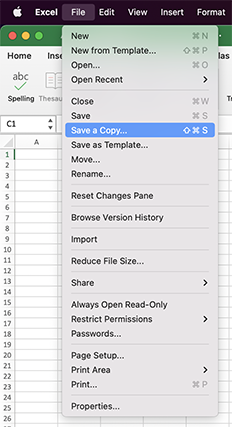
Expand the "File format" dropdown and select "PDF".
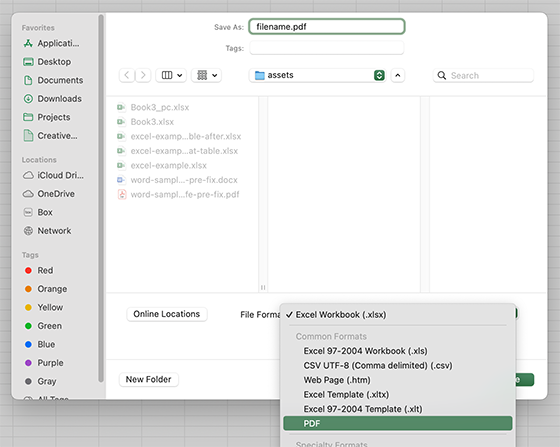
SAVE PDF ON WINDOWS:
Choose "File > Save As...", then "Browse".
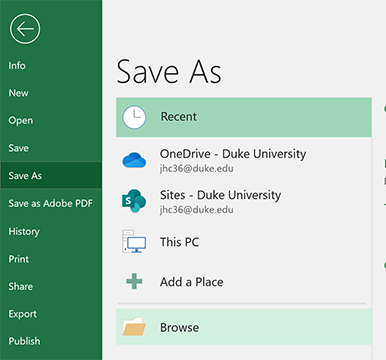
From the"Save as type" dropdown menu, choose "PDF".
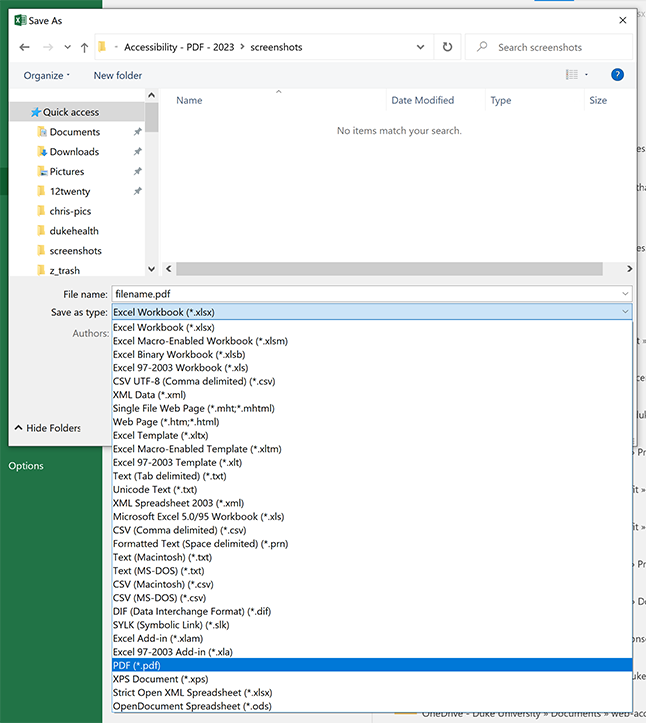
Note: If you have a "Save as Adobe PDF" button, you can use that instead. They produce slightly different results. One is not necessarily better than the other.
For more comprehensive training watch LinkedIn Learning Creating Accessible PDFs. It is free when you log in using your Duke email address.